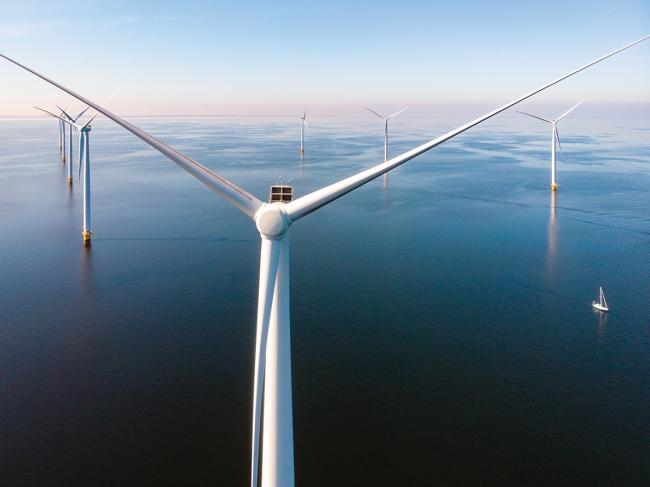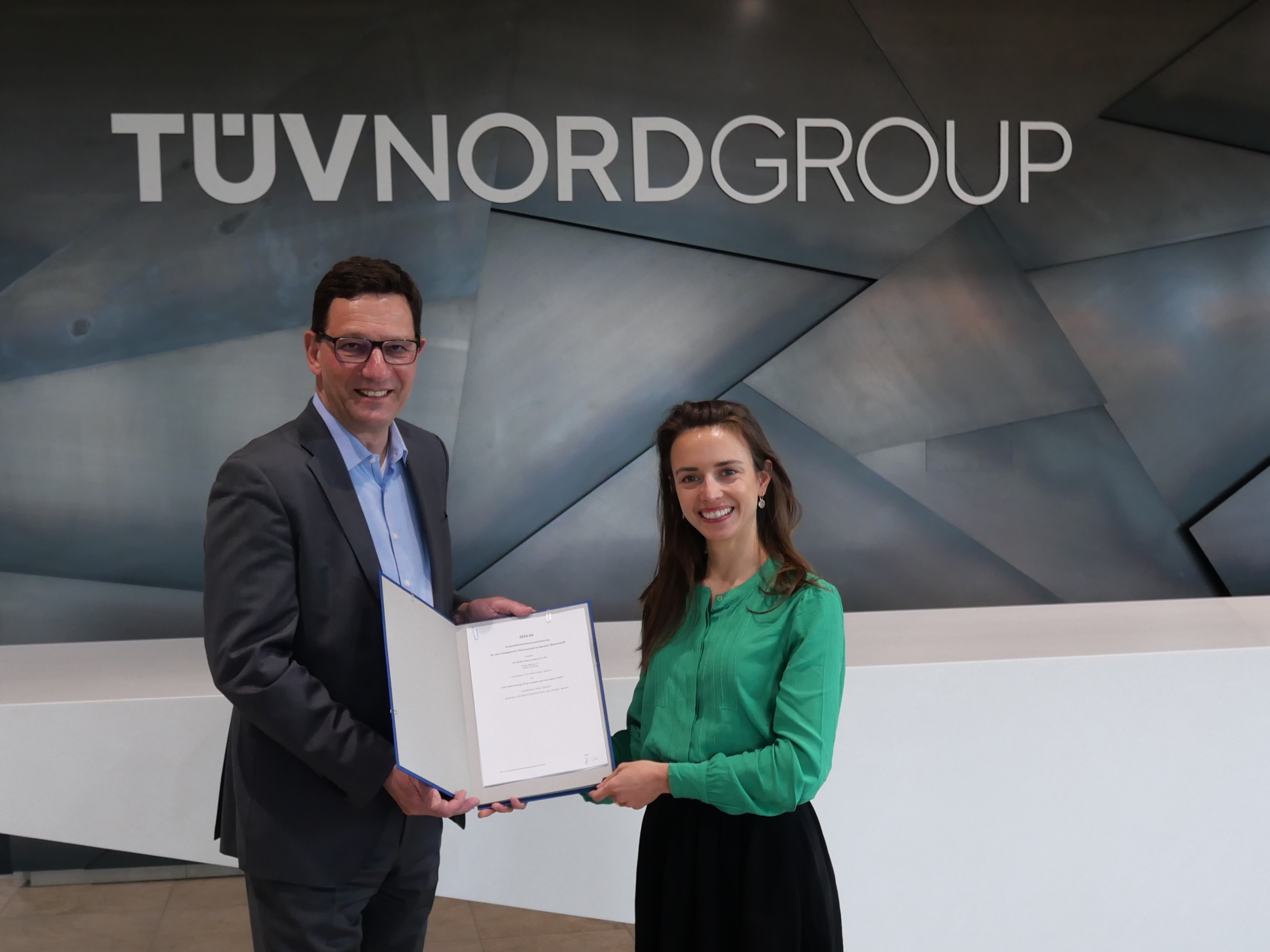Germany – green hydrogen output may top 44 TWh.
[Offshore Stiftung] The OFFSHORE WIND ENERGY Foundation published for the first time a demand and potential analysis for the production of green hydrogen by offshore wind energy in Germany. The calculations show that more than 60 GW of installable offshore capacity based on the new spatial planning plan (ROP) is possible if all available possibilities are used.This would also make it possible to produce considerable amounts of green hydrogen. In order to leverage the potential, however, the right political decisions and regulatory decisions are required after the Bundestag election.
Karina Würtz, Managing Director of the Foundation, presented the study to Lower Saxony’s Minister of the Environment and Energy, Olaf Lies, at a joint press conference in Hanover. Lower Saxony is intensively committed to a “green transformation” of the energy system and the economy.
🔥 What about we co-host a webinar? Let's educate, captivate, and convert the hydrogen economy!
Hydrogen Central is the global go-to online magazine for the hydrogen economy, we can help you host impactful webinars that become a global reference on your topic and are an evergreen source of leads. Click here to request more details
Read: “We feel confirmed by the result of the study. Much more offshore wind power is possible than we have previously planned in Germany. By way of comparison, these 60 gigawatts would make roughly the amount of electricity generated by 60 large coal-fired power plants superfluous.”
“The potential is therefore enormous and it shows that we are not shuttling down the electricity in Germany, on the contrary: we now have the opportunity to further expand this new form of climate-friendly power generation with the corresponding effects on jobs and investments on the coast.”
“Because the future of our energy lies in clean electricity and clean gas. At the same time, given the installed capacity of only around 7.5 GW so far, we are running out of time. Against this background, it is now necessary to set expansion targets that will enable us to quickly achieve climate neutrality. 40 GW in 2040 is simply not enough here. The chemical industry, electromobility, heat pumps and, last but not least, green hydrogen require a drastic expansion of renewable power generation.”
Enormous potentials, high time pressure, manifold need for action
Karina Würtz.
For the first time, the results impressively demonstrate the enormous potential of offshore wind energy in combination with the production of green hydrogen for Germany.
Würtz continues: “We are confronted monthly with the effects of the worsening climate crisis. For this reason, we as a foundation see the urgency of primacy of all climate protection measures without alternative. In the current spatial planning – with consistent use of all potentials contained in the current spatial planning plan, including the temporary priority area of shipping – more than 60 GW of wind energy at sea are mathematically possible – and this does not yet include co-use potentials.”
“We need an expansion path in this direction as soon as possible. In addition, part of the energy generated could be used to produce green hydrogen and thus make a substantial contribution to achieving the German goals in the National Hydrogen Strategy by 2040. This requires a binding target and sufficient designation of marine areas for offshore hydrogen production by the next federal government – in addition to the areas for pure power generation.”
“We also support this as part of a joint industry initiative. Newly approved offshore wind farms currently need 6 years to be implemented – here we are running out of time. Ambitious targets and a simultaneity of implementation measures are now needed. With the study, we want to give a corresponding impetus.”
Minister Lies was also convinced by the study results:
The study clearly illustrates that offshore wind energy is the key factor in achieving the climate goals. Without offshore expansion, we will not be able to achieve climate neutrality or the necessary amounts of electricity and hydrogen.
“For Lower Saxony as a coastal country, the expansion of offshore-based hydrogen production in the North Sea is of great importance. The hydrogen produced in this way will make a significant contribution to the decarbonisation of the steel and chemical industries in Lower Saxony and beyond.”
“The development of a hydrogen economy, driven by offshore wind energy, offers a wide range of economic opportunities along the entire value chain, from the construction, installation and operation of offshore plants and electrolysers to hydrogen distribution, hydrogen storage and hydrogen use. Due to its seaports and existing transport and storage infrastructure, Lower Saxony has all the prerequisites for the establishment of a hydrogen economy.”
Calculations based on the valid Maritime Spatial Plan (ROP)
According to the calculations, more than 1.2 million tons of green hydrogen (up to 44.2 terawatt hours (TWh))could be produced annually if the calculated wind energy capacity, which is above the 40 GW anchored in the Wind Energy at Sea Act for electricity generation, were used exclusively for hydrogen production.
By way of comparison, the National Hydrogen Strategy provides for a hydrogen production target of 28 TWh by 2035/40.
For the study carried out by Deutsche WindGuard, various assumptions were used in the area of influencing factors on the wind farm and electrolysis side. These were in particular the power density (installed megawatts per square kilometer), full load hours (degression in the case of another offshore extension) as well as the design and efficiency of the electrolysers.
In addition, the availability of space has been investigated as a decisive factor. As a reference point for the creation of the two scenarios (“ROP Basis”, “ROP Plus”), maritime spatial planning, which has been in force since 1 September, was chosen. Thanks for staying up to date with Hydrogen Central. The ROP Plus scenario includes all designated priority and reservation areas as well as conditional areas and the temporary priority area in Shipping Route 10.
For example, with an assumption of 8 MW per square kilometre of power density, as is currently the basis of the land development plan, more than 60 GW of installable wind energy capacity was determined. Both scenarios exclude potentials in the territorial sea (2 GW) and in the Dogger Bank (4-6 GW).
ACCORDING TO THE STUDY, THE POTENTIAL OF OFFSHORE WIND ENERGY IN GERMANY IS AT LEAST 60 GW, September 22, 2021








